
More photos
Find all photos of Visual Computing Trends 2019 in our web album
Audio Recordings of Keynotes
Find all audio recordings of the Keynotes on our YouTube channel.
08:30 Registration
09:00 Opening and welcome by Ulrike Huemer, CIO Stadt Wien
09:10 1st Keynote: Ken Perlin (New York University): Experiments in Future Reality
10:00 Discussion
10:30 Coffee break
11:00 2nd Keynote: Julia Schnabel (King's College London): The Future of Computer Vision in Biomedical Imaging
11:50 Discussion
12:20 Lunch break
13:15 3rd Keynote: Oliver Deussen (Universität Konstanz): Muss auch in Zukunft noch an der Bilderzeugung geforscht werden?
14:05 Discussion
14:35 Coffee Break
15:00 4th Keynote: Andrew Glassner (The Imaginary Institute): The Best of Algorithms, the Worst of Algorithms
15:50 Discussion
16:20 Panel discussion with all speakers, Moderator: Eduard Gröller (TU Wien/VRVis)
17:30 End
Speakers
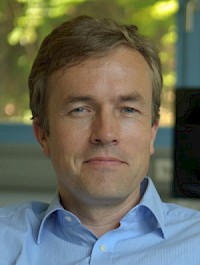
Prof. Dr. Oliver Deussen (University Konstanz): Do we still need computer graphics research, especially for rendering?
Abstract
Since more than fifty years Computer Graphics works on rendering images from different data sources. I many cases, such as for the integration of computer generated scenes in movies, methods are so good in the mean time that nearly nobody can distinguish between photographed and computer-generated material any more. Nowadays also computer games create a degree of realism that will probably lead to interactive movies in a couple of years. This success story inevitably creates the question if there are any major things left to research on. In my talk I will speak about some interesting and unsolved aspects in rendering and modeling techniques and will try to sketch where CG research will go in the next years and why it is necessary to still do basic research.
About Oliver Deussen
Prof. Dr. Oliver Deussen is professor for visual computing at University of Konstanz. After working in Magdeburg, Seattle and Dresden he found his perfect location at the lake of Konstanz. His fields of research encompass non photorealistic rendering, information visualization and aspects of object modeling. He is deputy speaker of the Transregional Research Group "Quantitative Methods for Visual Computing" where researchers from his university together with Stuttgart University try to find quantitative evaluation methods for various aspects of CG and visualization that enable a better reproducibility and comparability. As a visiting professor of the Chinese Academy of Science he tries to lift Chinese CG research to an international level and as president of the Eurographics Association he tries to foster European research on this topic. Since January 2019 he is one of the three spokespersons of the excellence cluster "Center for the advanced study of collective behavior" at University of Konstanz, where computer science methods are used to study collective behavior in a quantitative way, from insects to primates.
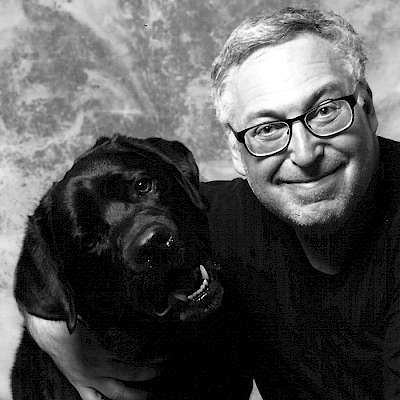
Dr. Andrew Glassner (The Imaginary Institute): The Best of Algorithms, the Worst of Algorithms
Abstract
Will you get a promotion or raise at your job? Will you be accepted into the university you're hoping for? Should you have surgery for a medical problem? Will you get that loan you need to fix up your home?
Questions like these are increasingly being answered by a new class of learning algorithms. These algorithms are used by companies, governments, educational institutions, hospitals, banks, courthouses, and other organizations that routinely make decisions that directly affect our lives. These algorithms are attractive because they are efficient, and are often presumed to be fair. In fact, it has become clear that these algorithms are routinely and inherently unfair, because they solidify, perpetuate, and amplify human biases and prejudices at an unprecedented scale. This creates a potential for enormous harm. If we acknowledge the problem and strive to address it with care and foresight, we can produce better tools that respect and benefit all citizens. We'll look at these issues, and sound a call for using this technology in kind and generous ways.
About Andrew Glassner
Dr. Andrew Glassner is a researcher and consultant in computer graphics and machine learning. Glassner has worked at Bell Communications Research, the IBM Watson Research Lab, Xerox PARC, and Microsoft Research. His technical books include the textbook "Principles of Digital Image Synthesis" and the three volumes of "Andrew Glassner's Notebook." He created the "Graphics Gems" series, founded the Journal of Computer Graphics Tools, served as Editor-in-Chief of ACM Transactions on Graphics, and was Papers Chair for SIGGRAPH '94. Glassner created, wrote, and directed the multiplayer Internet game "Dead Air" for the Microsoft Network, as well as the animated short "Chicken Crossing" and several live-action short films. Glassner is the author of three novels. His recent technical book, "Deep Learning: From Basics to Practice," is a complete introduction to the field in a friendly and informal style, with almost no math. Glassner also writes for children, writes music, and plays jazz piano.
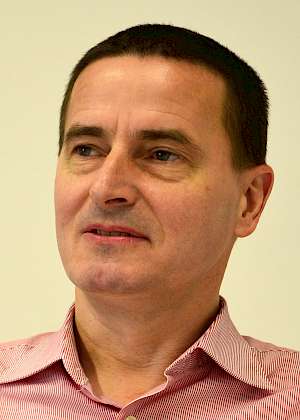
Prof. Eduard Gröller (TU Wien/VRVis): Panel moderation
About Eduard Gröller
Ao.Univ.Prof. Dipl.-Ing. Dr.techn. Eduard Gröller is Professor at the Institute of Visual Computing & Human-Centered Technology at the TU Vienna, Associate Professor at the University of Bergen (Norway) and Key Researcher at VRVis. He co-authored more than 260 scientific publications. He also has served and serves on various program and paper committees (ie. Computers&Graphics, IEEE Transactions on Visualization and Graphics, EuroVis Conference, IEEE Visualization Conference, Eurographics Conference). He has been paper co-chair of Volume Graphics 2005, IEEE Visualization 2005 and 2006, and Eurographics 2006. He has been co-chair of the VisSym 1999 Symposium, the Eurographics 2011 Conference, and the EuroVis 2012 Conference. Dr. Gröller has been Chief Editor of the Journal Computer Graphics Forum in the period 2008-2011. He became a fellow of the Eurographics Association in 2009. He is the recipient of the Eurographics 2015 Outstanding Technical Contributions Award. Dr. Gröller is head of the working group on computer graphics of the Austrian Computer Society and member of IEEE Computer Society, ACM (Association of Computing Machinery), GI (Gesellschaft für Informatik), OCG (Austrian Computer Society).
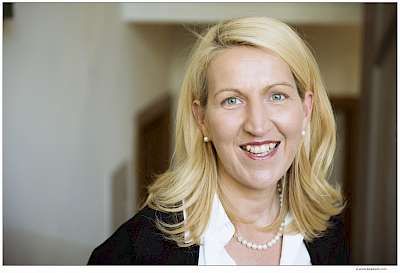
Mag. Ulrike Huemer (CIO City of Vienna): Opening of VCT2019
About Ulrike Huemer
Ulrike Huemer is a lawyer and CIO of the City of Vienna. After years as an assistant for constitutional law at the University of Linz, she was in charge of the negotiations in the Austrian Convention for the Austrian Association of Towns and Cities. This was followed by years in the financial administration of the City of Vienna, including the topics of financial equalisation, public budgeting and public infrastructure financing. As Head of Accounting and Taxation for the City of Vienna, she was intensively involved in e-government and administrative modernisation and finalised the introduction of SAP within the City of Vienna. She has been CIO of the City of Vienna since March 2014. In this function, she is particularly committed to ensuring that digitisation is recognised as a central issue for the economy, society and administration. Furthermore, women are increasingly being employed in ICT. To this end, two initiatives were launched: Digitale Agenda Wien (www.digitaleagenda.wien) and Digital City Wien (www.digitalcity.wien).
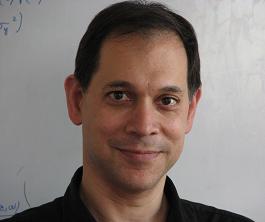
Prof. Ken Perlin (New York University): Experiments in Future Reality
Abstract
Ken Perlin will be discussing two topics. CHALKTALK is a powerful software tool that allows its user to create procedurally animated characters and simulations just by drawing sketches and connecting them to create powerful explanatory animations and simulations. We are using CHALKTALK both as an educational tool and as a way to prototype what a shared visual language would be like in a future where Augmented Reality has become ubiquitous.
CAVE is a new story about destiny and family, created specifically for collocated audiences in Extended Reality. In this multi-faceted experience, audiences are taken on a journey back thousands of years to when stories were told around a campfire. CAVE is a coming of age story told through the latest in experiential technology featuring binaural audio, mixed reality, and a co-located untethered virtual reality experience for an unprecedented several dozen viewers at a time. We showed it to about 2000 SIGGRAPH 2018 attendees this past August.
About Ken Perlin
Ken Perlin, a professor in the Department of Computer Science at New York University, directs the Future Reality Lab, and is a participating faculty member at NYU MAGNET. His research interests include future reality, graphics and animation, user interfaces and education. He is chief scientist at Tactonic Technologies and Holojam Inc, and is an advisor for High Fidelity. He received an Academy Award for Technical Achievement from the Academy of Motion Picture Arts and Sciences for his noise and turbulence procedural texturing techniques, as well as membership in the ACM/SIGGRAPH Academy, the 2008 ACM/SIGGRAPH Computer Graphics Achievement Award, the TrapCode award for achievement in computer graphics research, the NYC Mayor's award for excellence in Science and Technology and the Sokol award for outstanding Science faculty at NYU, and a Presidential Young Investigator Award from the National Science Foundation. He serves on the Advisory Board for the Centre for Digital Media at GNWC, and external examiner for the Interactive Digital Media program at Trinity College. Previously he served on the program committee of the AAAS, was general chair of the UIST2010 conference, directed the NYU Center for Advanced Technology and Games for Learning Institute, and has been a featured artist at the Whitney Museum of American Art. He received his Ph.D. in Computer Science from NYU, and a B.A. in theoretical mathematics from Harvard. Before working at NYU he was Head of Software Development at R/GREENBERG Associates in New York, NY. Prior to that he was the System Architect for computer generated animation at MAGI.
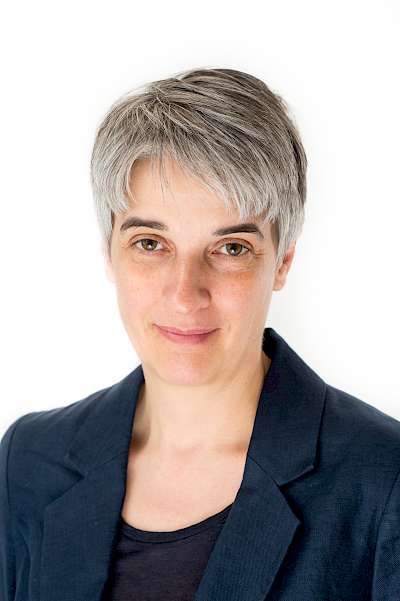
Prof. Julia Schnabel (King's College London): The Future of Computer Vision in Biomedical Imaging
Abstract
In this talk I will present interactions between computer vision and medical imaging that have greatly contributed to recent advances in the field, such as deep learning architectures for (medical) image classification, segmentation and reconstruction. The interplay between computer vision and medical imaging is an important one, not the least since the computer vision community is bigger, has access to more data, and benefits from more industry backing, but at the same time us limited to comparatively “simple” tasks based almost exclusively on natural images and videos. In contrast, medical imaging uses a multitude of different, complementary image modalities and protocols, is subject to patient and disease variability, as well as imaging artefacts that may occlude vital diagnostic details. I will draw from a number of examples in cancer, cardiac and fetal imaging to illustrate both the power and the challenges of computer vision approaches applied to medical imaging.
About Julia Schnabel
Julia Schnabel has joined the School Biomedical Engineering and Imaging Sciences, King's College London in July 2015 as Chair in Computational Imaging. She is Director of EPSRC Centre for Doctoral Training in Medical Imaging, which is jointly run by King’s College London and Imperial College London. Previously she was Professor of Engineering Science at the University of Oxford, and Fellow in Engineering at St. Hilda’s College, Oxford. Julia Schnabel's current research interests are in machine/deep learning, nonlinear motion modelling, multi-modality imaging, and quantitative imaging for applications in cancer, cardiovascular and fetal imaging, in which she has published over 150 peer-reviewed papers. She is an Associate Editor of IEEE Transactions on Medical Imaging and IEEE Transactions on Biomedical Engineering, a member of the Editorial Board of Medical Image Analysis, and Director of the International Medical Imaging Summer School (MISS) exploring the interface between medical imaging, computer vision and machine/deep learning. She has been Programme Chair of the International Conference on Medical Image Computing and Computer Assisted Intervention (MICCAI) 2018 in Granada, Spain, where she became a Fellow of the MICCAI Society. She is an elected member of the MICCAI Society board and the IEEE EMBS Administrative Committee (from 2017), and a member of the Inria Science Board.”
Funding partner
TechGate Vienna
Donau-City-Straße 1
1220 Vienna
Das TechGate befindet sich hier.
If you arrive by public transport, take the U1 to Kaisermühlen - Vienna International Center (exit Schüttausstraße) or take the Bus 20A, 92A station Vienna International Center.
For arrival by car, take the A22 exit Donau-City Wagramer Straße junction Donau-City-Straße.
Erst wenn Sie auf den Button "Google Maps laden" klicken, wird die Google Map geladen. Dadurch werden persönliche Informationen an Google übertragen und Cookies gesetzt. Diese Einstellung wird für 6 Monate gespeichert.